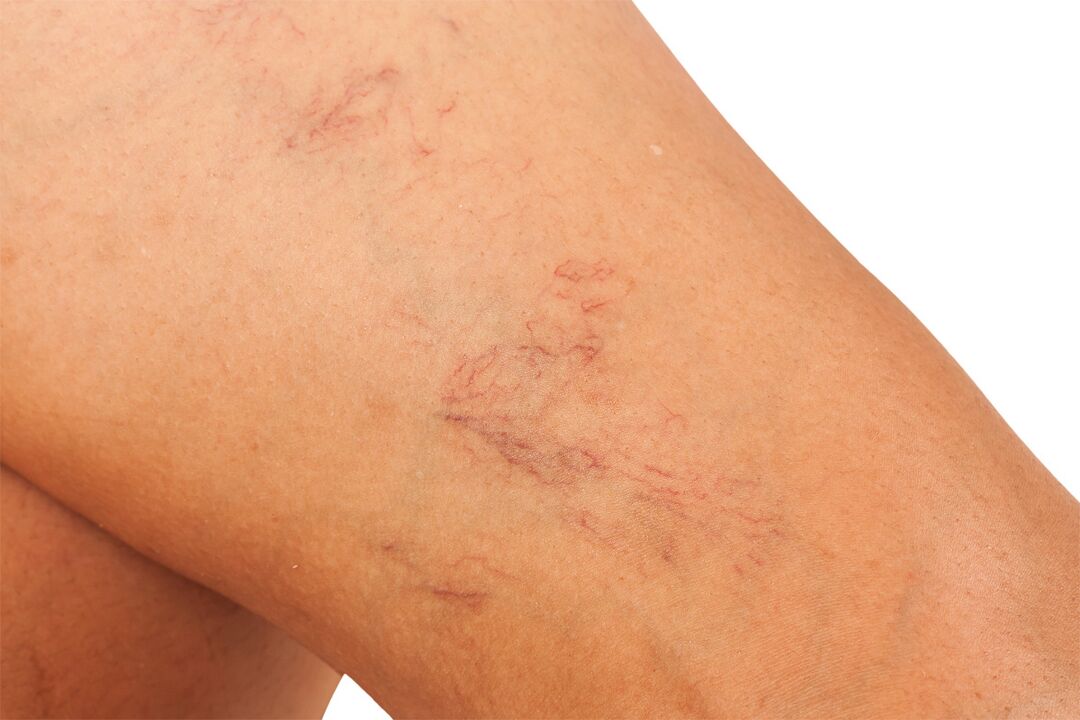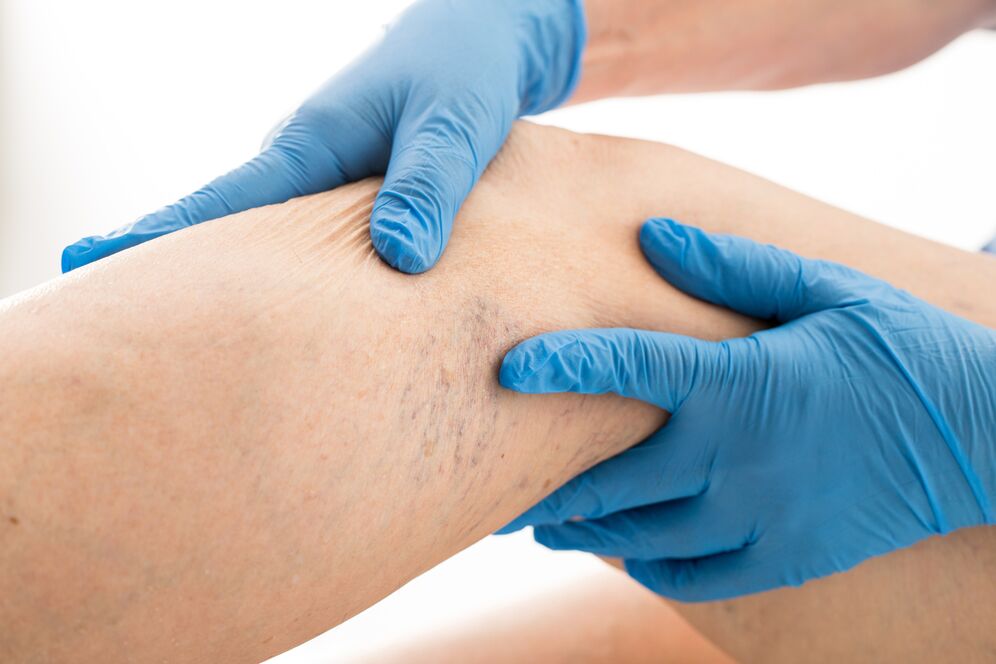Perhaps every third, or even every second person today, suffers from varicose veins of the legs or predisposed to it. This has become a real disaster, especially when you consider what loads our feet are subject to today's civilized world. You need to know which varicose veins are dangerous before the appearance of its first signs.
What is varicose veins

Varicosis in the foot is a chronic disease, in which the veins expand in the foot, creating joints, as a result of which the blood flow is concerned, and the blood remains in the venous system. In the disease, the vein lumen expands, as a result of blood flow from the feet to the veins, the veins in the legs have valves that pass only blood, which does not allow blood to stagnate. If the work of such valves is worried, then the blood begins to move in another direction, namely, stagnant.
Causes of varicose veins in the legs in women and men
Among the causes of varicose veins in the legs are, first and foremost, an inherited predisposition to the disease. If in your family, one has a varicose veins in the leg, then the risk of getting sick for you is extremely high, as the disease is due to the hereditary weakness of the venous wall-one of the most common causes.
Varicose veins in the legs are mostly feminine diseases, as wearing high behavior shoes significantly increases the risk. Moreover, hormonal oscillations are added to the fire during pregnancy or menopause, which also provoke the expansion of veins in women.
Most often, foot women are sick after forty -five years, but at a younger age they are often found. Most often, in adolescents or young people, the disease develops due to open messages from arterio fistulas between veins and arteries.
Expanding the veins in the legs is found in men, by the nature of the profession, giving the feet a large load. This disease is often ill with people who lead a sedentary lifestyle, spend a lot of time standing, move slightly. Inappropriate tight, as well as extra pounds contribute to the formation of stagnation. Liver diseases, such as cirrhosis or hepatitis, can cause varicose veins in the legs.
This disease is also quite common among athletes, and this suggests that excessive physical activity can also provoke it.
Symptoms and signs
In the initial phase, the symptoms of varicose veins in the legs are not visible, the disease can appear significantly. Or the signs of vein enlargement are visible - the large winding veins - the toes in the legs begin to last under the skin, but a person does not suffer any pain. Vienna can manifest, last through the skin gradually, and may appear after difficult physical exercises or tireless work. It happens that the veins appear suddenly after a person spent the whole day at his feet in the heat.
But if, when you examine the lower leg, you have noticed that the veins under the skin became thick, that there were places with knotted stretches, and the veins themselves swell when you stay and fall when you go to bed, most likely start varicose veins.
Another symptom is swelling of the feet during the day during sitting, staying, walking, and reducing swelling in the lie.
A bright characteristic of the disease is also pigmentation of the inner surface of the feet - the skin is compressed, becomes less elastic, gains a painful glow. In areas with such skin, the hair falls.
Varicosis is also characterized by a constant feeling of fatigue in the legs, pain and burning. A person is tired quickly, sometimes seizures are marked.
Diagnosis and Treatment: Drugs, Operations, Folk remedies
Varicosis is diagnosed when examining a surgeon by a specialist as well as based on data from the UZU veins. Flebography is also performed, that is, the substances of the contrasting stains are introduced into the bloodstream, and after which the veins are studied.
Treatment depends on which stage the disease is, and whether the disease is accompanied by complications. Treatment can be based on conservative and surgical methods. Conservative means wearing socks or sweater, the use of medicines with internal and external use. Conservative treatment methods also include sclerotherapy and laser radiation. In particularly complex cases, the veins are removed surgical.

A person suffering from varicose veins of the legs should know that in the event of sudden growth of the foot, fever and skin compression, it is necessary to call a doctor urgently. Such an attack can be associated with shortness of breath, sense of lack of air, weakness, and bleeding.
Expert's opinion: How is this related to varicose veins? By throwing an enlarged vein occurs, inflammation of the thrombus is thrombophlebitis. This disease can occur at elevated body temperature. Part of the thrombus can be disconnected and entered into the pulmonary arteries, which will cause shortness of breath and further development of serious symptoms of life.
Do not do it in such cases with home treatment - call a doctor.
The most effective and radical method of treating varicose veins is, of course, operations. Operation is directed if conservative treatment methods are ineffective. The essence of surgery depends on the fact that through small incisions on the skin the surgeon removes enlarged veins. Then the foot is completely connected, and after a few hours the patient can stay enough and even walk. This is probably the only way guaranteed to get rid of the serious consequences of the disease.
Folk remedies can help when treatment with traditional methods or relieve the patient's condition. So the main ingredients when creating medicinal ointments are:
Famous products based on animal fat, apple cider vinegar, beekeeper products (honey, propolis), body, clay and other ingredients will also help cure the disease.
The consequences of varicose veins
The varicose veins of the legs cannot be left per se, it must be treated because, developed, this disease can lead to many unpleasant and sad consequences. So varicose veins can be complicated by eczema and dermatitis - inflammatory disease of the skin on the foot, the cause of which is precisely venous blood stagnation. Eczema is characterized by the appearance of redness seals on the skin, and the edges of this rash are uneven, skin in these itchy places and cracks or bubbles appear.
Varicose eczema, on the other hand, can develop in a trophic ulcer. A trophic ulcer is also a complication of varicose veins - it is a ulcer that does not heal for a long time on the skin on the lower leg. A trophic ulcer begins with a shallow ulcer characterized by a bloody or transparent fluid at the bottom. This is an extremely painful wound that can completely destroy a person's life - leads to a violation of life, sleep.
One of the most common complications of varicose veins in the legs is thrombophlebitis, that is, inflammation of the vein, associated with the formation of a blood clot or blood clot. Thrombophlebitis is usually associated with severe pain when walking, fever, redness of the skin and seal formation. With thrombophlebitis, vein ruptures at the expansion site are possible, as a result of which bleeding is formed. In this case, it is necessary to call a doctor immediately.























